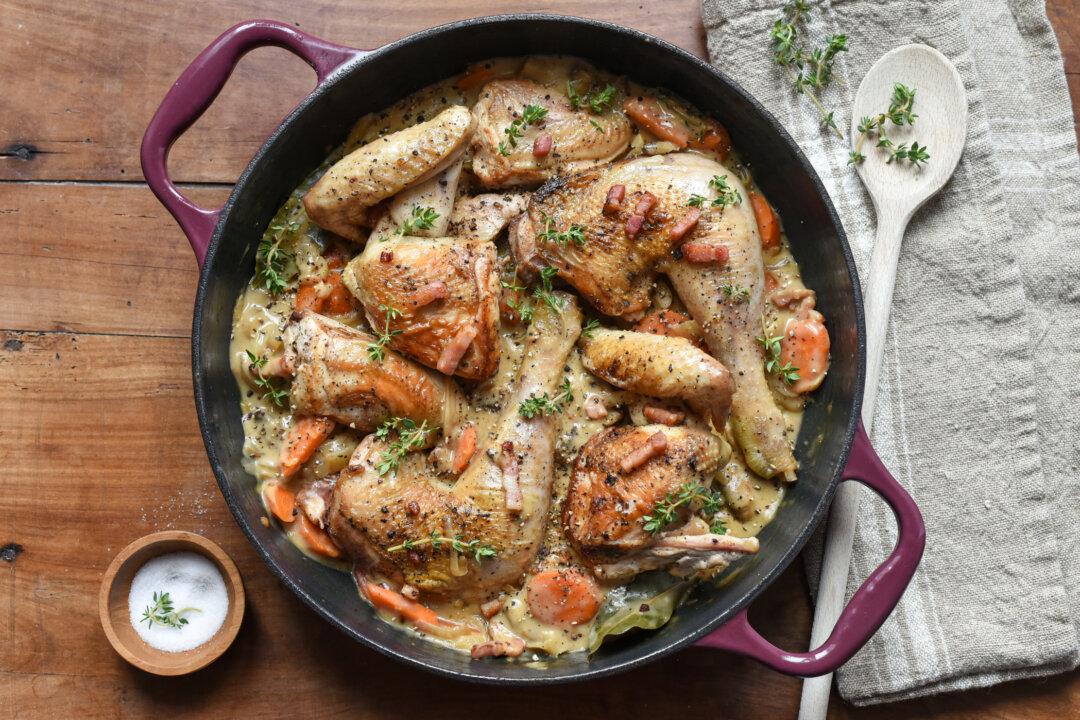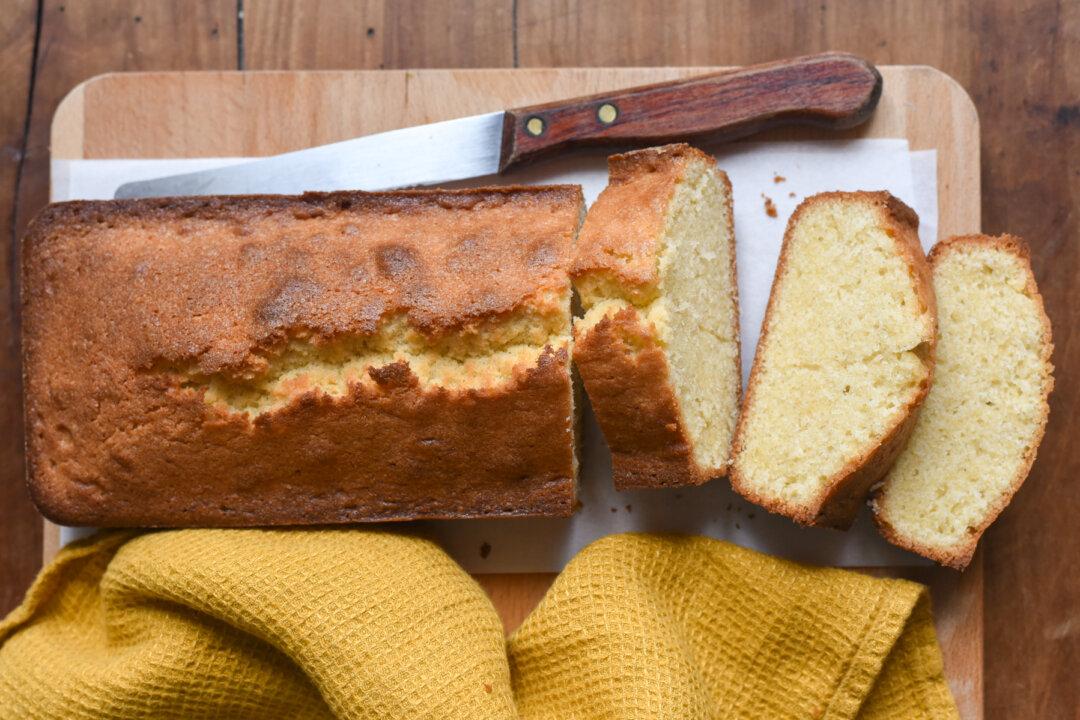What I love most about the tarte Tatin is that it doesn’t have to be perfect. The crust can crumble, the caramel can drip, a few apples can fall out of place. It’s fine. Tarte Tatin will always look appetizing and taste fantastic, no matter what.
This iconic upside-down apple tart defies the cliché of fussy, flawless French desserts, while offering that same rich, sophisticated taste. Made with juicy apples doused in sweet caramel and draped with a buttery crust, it proves how simple ingredients can work magic together.

Choose apples that hold their shape well while baking, such as Honeycrisps. Shutterstock
Conflicting Origins
Legend has it that this renowned dessert was born in the 1880s, at Hôtel Tatin in France’s Loire Valley. The hotel was run by sisters Stéphanie and Caroline Tatin.One day, the story goes, Stéphanie was making a classic apple pie and accidentally let the apples burn in a pan with butter and sugar. In an attempt to salvage the fruits, she covered them in pastry, finished baking them in the oven, and flipped the result upside-down before serving it to her guests. The dessert was a hit and became the signature dish of Hôtel Tatin.
In the 1950s, the famed Parisian restaurant Maxim’s introduced the tarte Tatin to its menu, further adding to its fame. Rumor quickly spread that Louis Vaudable, owner of the restaurant, stole the recipe from the Tatin sisters after a visit to their hotel. In reality, Louis Vaudable became the owner of Maxim’s in 1932, several years after the Tatin sisters had passed away, discrediting the story.
Some historians also contest that the Tatin sisters were the creators of the famous dessert at all, finding traces of “tartes renversées,” or upside-down tarts, as early as the 1840s in the Loire region.
Many debates still surround the true origins of the tarte Tatin—only adding to the allure of the dessert, one could say.
Breaking It Down
Despite its complicated reputation, the tarte Tatin is a simple concept: apples, caramel, and crust. The tart is baked upside down, with caramel and fruit at the bottom and the pastry on top. Once inverted, the lustrous caramelized apples are unveiled.With only a few ingredients and an understanding of key factors and techniques, you’ll be a master of the Tatin in no time.
The Baking Vessel
A cast-iron skillet is your best bet. The cast iron tolerates and retains higher heat than other baking dishes, preserving the taste, shape, and texture of the apples. You’ll get the best caramelization, a crisp crust, and proper overall baking. If you do not have a cast-iron skillet, use an ovenproof nonstick skillet.The Pâte Sablée
With this recipe, you’ll notice the crust is slightly crumblier than your average apple pie—which is expected for a tarte Tatin—but still firm enough to undergo the upside-down flip. This pâte sablée, or “sandy crust,” is rich and buttery, to offset the sticky sweetness of the fruit and caramel. Some modern tarte Tatin recipes call for store-bought pie crust or even puff pastry, but I believe making your own from scratch is the way to go.
Making the crust. Audrey Le Goff
The Apples
For making tarte Tatin, I’m particularly fond of Honeycrisp apples. This variety holds up well to the forceful heat and caramelization, turning utterly sweet and tender, yet not mushy. Feel free to try out other varieties known for holding their shape, such as Golden Delicious, Braeburns, or Granny Smiths, which offers a nice tartness against the sweet caramel.Taking the proper time to cook the apples on the stove-top first is an essential step. Do not rush it. The apples need to release their juices in the skillet so that they don’t sweat them out later in the oven, making the crust soggy.

Preparing the apples; keep them covered in lemon juice. Audrey Le Goff
The Caramel
Note that the time needed for cooking the caramel will depend on your stove-top and on what kind of skillet you are using. Keep a close eye on the caramel color as it simmers and aim for a golden hue—not amber. Since color can be hard to judge in a dark skillet, occasionally smear a small amount of caramel onto a white plate to check your progress.
Laying the pre-cooked apples in the caramel.Audrey Le Goff
The Finishing Touch
Sugar is of course a star ingredient in this recipe, but a generous sprinkle of salt onto the apples right before baking makes their flavor shine even brighter. Fleur de sel is my sprinkle of choice, but sea salt flakes or Maldon salt work, too.
Piercing the crust, to allow steam to escape. Audrey Le Goff
The Flip
The feat of flipping the tarte Tatin upside-down after baking can seem intimidating, but really, don’t stress out about it. Run a knife around the crust, place a plate on top of it, hold the plate and skillet firmly, and flip. If any apples move around or remain stuck to the skillet, simply place them back onto the tart before sliding it onto a serving tray.Enjoy your tarte Tatin warm or after a few hours in the fridge, to allow the apples and crust to firm up so you can serve clean slices. A dollop of crème fraiche on top is mandatory—in true French fashion.
Variations, Sweet or Savory
A tarte Tatin is best made with fruits or vegetables that are in season. For other sweet variations, choose fruits that can hold their shape and that aren’t overly juicy or soft—that means no ripe peaches, raspberries, or blueberries. Great options include quinces (quartered), firm Anjou or Bosc pears (quartered), and rhubarb stalks. These can be cooked in a skillet until tender, just like the apples.Bananas (sliced), pineapple (sliced), or figs (halved) are tender enough to be directly arranged onto the caramel and covered with the pastry, with no prior cooking.
For savory variations, pearl onions (whole), endives (halved), fennel (sliced), and firm tomatoes (sliced) are my favorites. Skip the caramel and simply pan-sear the vegetables in the skillet with two or three tablespoons of balsamic vinegar until slightly tender. Add another savory twist by spiking the dough with dry herbs (1 tablespoon of dried rosemary or thyme) and/or inserting slices of brie or goat cheese on top of the vegetables before covering them with the pastry.

Onion tarte Tatin. Shutterstock
Classic Tarte Tatin
Makes one 9- to 10-inch tartFor the crust:
- 1 cup all-purpose flour
- 1 tablespoon sugar
- 1/2 teaspoon salt
- 1/2 cup unsalted butter, cold and cubed
- 1 large egg yolk
- 1 tablespoon lemon juice
- 6 medium Honeycrisp apples
- 2 tablespoons lemon juice
- 1/3 cup unsalted butter
- 1 cup sugar
- 1 vanilla bean, halved and scraped
- 1 teaspoon fleur de sel (or sea salt flakes)
In a small bowl, whisk together the egg yolk and lemon juice with a fork, and add to the other ingredients. Combine until the dough comes together into a ball. If it feels too dry, you can add a tablespoon of water. Wrap in plastic film and chill until needed, at least 30 minutes and up to 24 hours.
Make the topping: Peel, core, and cut the apples into quarters. As you go, reserve the apple quarters in a large bowl with 2 tablespoons of lemon juice, to prevent them from browning. Stir the apple quarters as you go to make sure they’re always lightly coated in the lemon juice.
In a 9- to 10-inch cast-iron skillet, melt the butter over medium heat with the sugar and vanilla bean scrapings. Stir and cook for about 5 minutes, until the sugar has dissolved and the liquid starts to simmer. Add the apple quarters, stir to coat, and turn the heat down to low.
Cover with a large sheet of foil to keep the steam inside, and cook for 20 minutes until the apples are tender, but not yet mushy, stirring occasionally and spooning the liquid in the pan over the apples as they cook. Always place the foil back after stirring.
With a slotted spoon or spatula, transfer the apple quarters to a cooling rack and sprinkle evenly with the fleur de sel (or sea salt flakes). Bring the heat to high and simmer the remaining liquid until it turns into a golden caramel. Remove from the heat.
Make the tart: Preheat your oven to 430 degrees F, with a rack in the middle.
Take the crust out of the fridge, transfer it to a lightly floured working surface, and roll it out to a 12-inch circle.
When cool enough to handle with your fingers, place the apple quarters back into the skillet, in the caramel, in a circular pattern, with the rounded sides facing down.
Cover with the crust and tuck the edges of the crust into the pan. Poke four tiny holes into the crust with a knife, to allow the steam to escape while baking.
Bake for 10 minutes in the preheated oven. Turn the oven temperature down to 375 degrees F and bake for 20 more minutes, until the crust is golden.
Transfer the tart to a cooling rack for 5 minutes, then flip it upside down onto a serving plate. Use oven gloves or kitchen towels to protect your hands when you flip the tart as some remaining juice may still spill from the side of the skillet. Do not wait any longer than 5 minutes before you flip it, or else the caramel will harden and the apples will remain stuck to the bottom of the pan.
Serve warm, with a dollop of crème fraiche on top, or chilled.
Audrey Le Goff is a French food writer, photographer, and creator of the food blog Pardon Your French, where she shares recipes and stories from her beloved home country, France. She is the author of the cookbook “Rustic French Cooking Made Easy” (2019). She currently lives in Niagara, Canada. Follow her on Instagram @pardonyourfrench





